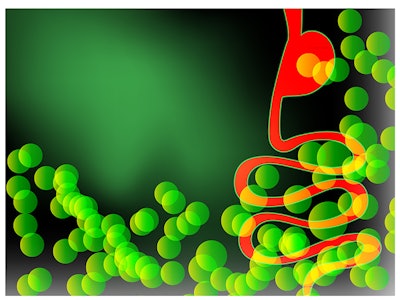
Ever more poultry producers are adopting antibiotic-free production, or treating antibiotics prudently, and this requires better gut health management. Yet this is not always such an easy task when you don’t fully know what you are dealing with. A lot has been unknown within the inner reaches of the chicken gut.
We’ve been somewhat in the dark, but a lot more light has been shone into the poultry gut microbiome over recent months. So much so that the number of bacterial species known to live in the chicken gut has more than doubled.
The discovery, thanks to a study led by the UK’s Quadram Institute, is thought to offer a substantial step forward in understanding the makeup of the poultry gut microbiome, laying the groundwork for future comparative and intervention studies.
The more you look, the more you find
Quadram’s work initially began with 50 fecal samples from two chicken breeds reared in the UK but was subsequently expanded to include computer-based analysis of over 500 datasets from similar samples drawn from 12 countries.
From these, the investigators were able to compile a set of 20 million microbial genes and to reconstruct 5,000 microbial genomes.
These fell into over 800 bacterial species – only 158 of which had validly published names, while the majority ranked as previously unknown. The researchers isolated over 280 bacterial cultures, which allowed them to describe 30 newly cultured species.
Naming who’s who
Working with a nomenclature expert, hundreds of new Latin names were created resulting in a stable, clear and memorable set of descriptors for the novel bacteria, creating a more user-friendly alternative to the automated use of bland, user-unfriendly alphanumerical designations.
Quadram believes that the work has probably resulted in the largest number of microbial taxonomic names created within a single research study.
This journey into the unknown was possible thanks to using two cutting-edge approaches.
The first, metagenomics, relies on extracting and sequencing DNA from fecal or gut samples and then analyzing DNA sequences to reconstruct the genetic blueprints of associated microbes.
The second approach involved high-throughput recovery and DNA-sequencing of cultured isolates. Both approaches facilitated the discovery of new organisms, while also allowing them to be classified and assigned an accurate position within the family tree of life.
The extensive catalogue of genes, genomes and isolates created substantially improves the coverage of the chicken gut microbiome in public databases and will make it possible to profile sequences from the chicken gut much more rapidly, easily and comprehensively. Gut health management may never be the same again.


















